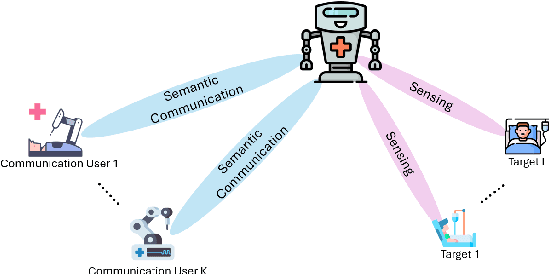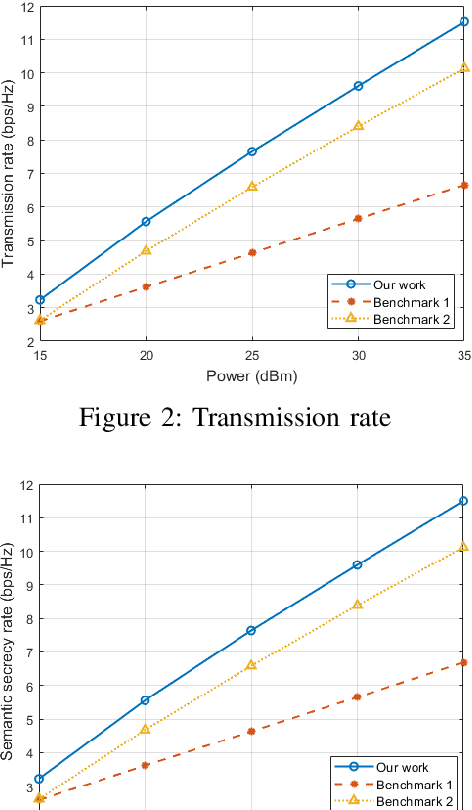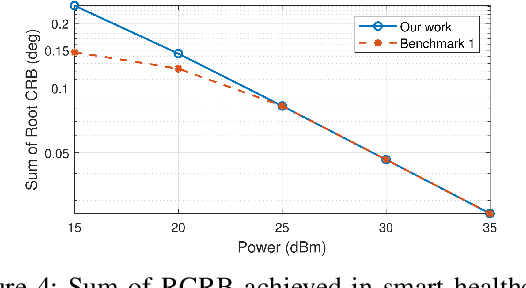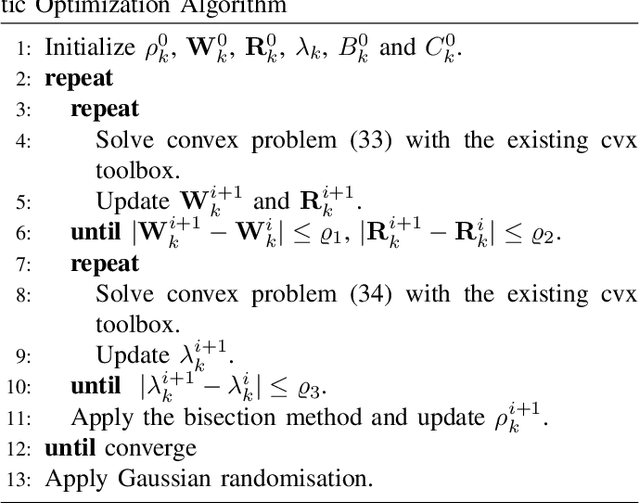Yinchao Yang
Integrated Sensing, Computing, and Semantic Communication with Fluid Antenna for Metaverse
Apr 10, 2025Abstract:The integration of sensing and communication (ISAC) is pivotal for the Metaverse but faces challenges like high data volume and privacy concerns. This paper proposes a novel integrated sensing, computing, and semantic communication (ISCSC) framework, which uses semantic communication to transmit only contextual information, reducing data overhead and enhancing efficiency. To address the sensitivity of semantic communication to channel conditions, fluid antennas (FAs) are introduced, enabling dynamic adaptability. The FA-enabled ISCSC framework considers multiple users and extended targets composed of a series of scatterers, formulating a joint optimization problem to maximize the data rate while ensuring sensing accuracy and meeting computational and power constraints. An alternating optimization (AO) method decomposes the problem into subproblems for ISAC beamforming, FA positioning, and semantic extraction. Simulations confirm the framework's effectiveness in improving data rates and sensing performance.
Generative AI Empowered Semantic Feature Multiple Access (SFMA) Over Wireless Networks
Dec 30, 2024Abstract:This paper investigates a novel generative artificial intelligence (GAI) empowered multi-user semantic communication system called semantic feature multiple access (SFMA) for video transmission, which comprises a base station (BS) and paired users. The BS generates and combines semantic information of several frames simultaneously requested by paired users into a single signal. Users recover their frames from this combined signal and input the recovered frames into a GAI-based video frame interpolation model to generate the intermediate frame. To optimize transmission rates and temporal gaps between simultaneously transmitted frames, we formulate an optimization problem to maximize the system sum rate while minimizing temporal gaps. Since the standard signal-to-interference-plus-noise ratio (SINR) equation does not accurately capture the performance of our semantic communication system, we introduce a weight parameter into the SINR equation to better represent the system's performance. Due to its dependence on transmit power, we propose a three-step solution. First, we develop a user pairing algorithm that pairs two users with the highest preference value, a weighted combination of semantic transmission rate and temporal gap. Second, we optimize inter-group power allocation by formulating an optimization problem that allocates proper transmit power across all user groups to maximize system sum rates while satisfying each user's minimum rate requirement. Third, we address intra-group power allocation to enhance each user's performance. Simulation results demonstrate that our method improves transmission rates by up to 24.8%, 45.8%, and 66.1% compared to fixed-power non-orthogonal multiple access (F-NOMA), orthogonal joint source-channel coding (O-JSCC), and orthogonal frequency division multiple access (OFDMA), respectively.
Fluid Antenna-Assisted Near-Field System
Sep 30, 2024Abstract:This paper proposes a fluid antenna (FA)-assisted near-field integrated sensing and communications (ISAC) system enabled by the extremely large-scale simultaneously transmitting and reflecting surface (XL-STARS). By optimizing the communication beamformer, the sensing signal covariance matrix, the XL-STARS phase shift, and the FA position vector, the Cram\'er-Rao bound (CRB), as a metric for sensing performance, is minimized while ensuring the standard communication performance. A double-loop iterative algorithm based on the penalty dual decomposition (PDD) and block coordinate descent (BCD) methods is proposed to solve the non-convex minimization problem by decomposing it into three subproblems and optimizing the coupling variables for each subproblem iteratively. Simulation results validate the superior performance of the proposed algorithm.
E-Healthcare Systems: Integrated Sensing, Computing, and Semantic Communication with Physical Layer Security
Sep 30, 2024



Abstract:This paper introduces an integrated sensing, computing, and semantic communication (ISCSC) framework tailored for smart healthcare systems. The framework is evaluated in the context of smart healthcare, optimising the transmit beamforming matrix and semantic extraction ratio for improved data rates, sensing accuracy, and general data protection regulation (GDPR) compliance, while considering IoRT device computing capabilities. Semantic metrics such as semantic transmission rate and semantic secrecy rate are derived to evaluate data rate performance and GDPR risk, respectively, while the Cram\'er-Rao Bound (CRB) assesses sensing performance. Simulation results demonstrate the framework's effectiveness in ensuring reliable sensing, high data rates, and secure communication.
Joint Semantic Communication and Target Sensing for 6G Communication System
Jan 30, 2024


Abstract:This paper investigates the secure resource allocation for a downlink integrated sensing and communication system with multiple legal users and potential eavesdroppers. In the considered model, the base station (BS) simultaneously transmits sensing and communication signals through beamforming design, where the sensing signals can be viewed as artificial noise to enhance the security of communication signals. To further enhance the security in the semantic layer, the semantic information is extracted from the original information before transmission. The user side can only successfully recover the received information with the help of the knowledge base shared with the BS, which is stored in advance. Our aim is to maximize the sum semantic secrecy rate of all users while maintaining the minimum quality of service for each user and guaranteeing overall sensing performance. To solve this sum semantic secrecy rate maximization problem, an iterative algorithm is proposed using the alternating optimization method. The simulation results demonstrate the superiority of the proposed algorithm in terms of secure semantic communication and reliable detection.
 Add to Chrome
Add to Chrome Add to Firefox
Add to Firefox Add to Edge
Add to Edge